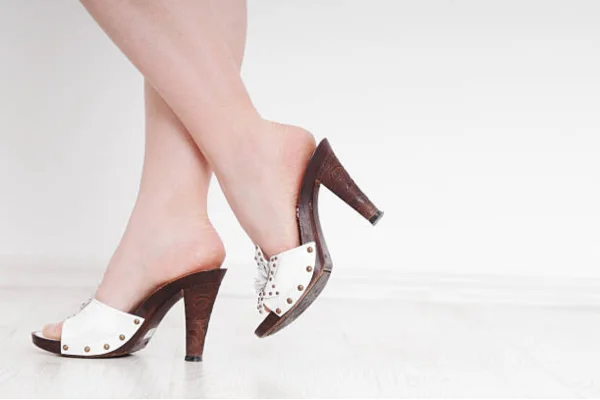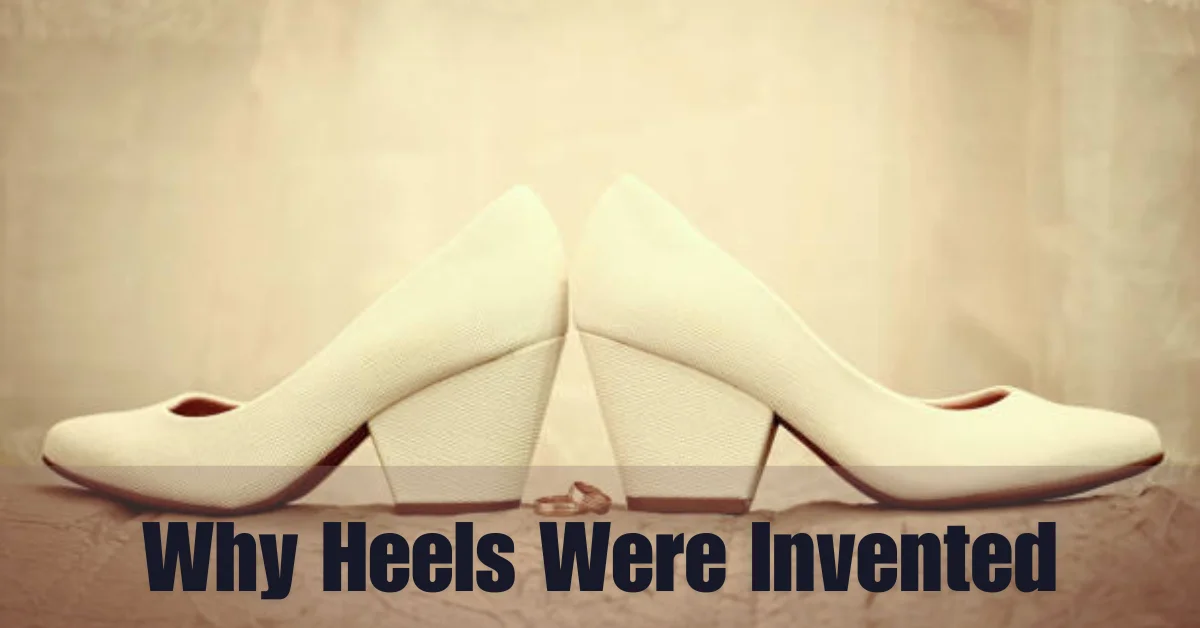Heels are a staple in fashion today, worn by millions around the world to elevate their style—literally and figuratively. But have you ever wondered why heels were invented in the first place? What purpose did they serve, and how did they evolve into the iconic fashion statement we know today? Let’s dive into the fascinating history of heels, from their practical origins to their current status as a symbol of power, elegance, and sometimes, controversy.
Heels have always been more than just a piece of footwear. They represent style, status, and a certain allure that’s hard to define but easy to recognize. Whether you’re a fan of heels or not, their impact on fashion and culture is undeniable. But why were heels invented in the first place? This question takes us on a journey through history, revealing the many roles heels have played over the centuries.
The Origins of Heels: A Practical Invention

Heels weren’t always about fashion. In fact, their origins are surprisingly practical. The first recorded use of heels dates back to ancient Persia, where soldiers wore them for stability while riding horses. The heels helped to keep their feet in the stirrups, providing better control during combat. This practical purpose laid the foundation for what would eventually become a fashion trend.
Heels in Ancient Civilizations
While the Persians may have been the first to use heels, they weren’t the only ancient civilization to recognize their utility. In ancient Egypt, heels were worn by the upper class during ceremonial events. These early heels were made of wood and had a distinct platform, elevating the wearer both literally and socially. The idea of heels as a status symbol was born.
The Role of Heels in the Military
The use of heels in the military didn’t stop with the Persians. Throughout history, soldiers in various cultures adopted heels for similar reasons. In Europe, during the early 17th century, heels became part of military attire. The additional height and stability they provided were seen as advantageous during combat. This military association also contributed to the perception of heels as a symbol of power and masculinity.
Heels as a Symbol of Power and Status
As heels transitioned from practical use to a symbol of status, they began to appear in more ornate and decorative forms. In the courts of Europe, particularly in France, heels became a way to display wealth and power. The higher and more elaborate the heel, the more prestigious the wearer. King Louis XIV of France famously wore red heels, a color reserved for the elite, solidifying the heel’s place as a status symbol.
The Renaissance and the Birth of Fashionable Heels
The Renaissance was a period of artistic and cultural revival, and fashion was no exception. During this time, heels began to be worn by both men and women as a fashion statement. The heels of this era were often made from luxurious materials and featured intricate designs. The trend spread across Europe, with heels becoming an essential part of high fashion.
The Evolution of Women’s Heels
While heels were initially worn by both genders, the 18th century saw a shift. As men’s fashion became more conservative, women’s fashion embraced the heel. Women’s heels became taller, narrower, and more extravagant. This era also saw the development of the stiletto, a type of heel that has come to epitomize femininity and elegance.
Heels in the 20th Century: From Practical to Glamorous
The 20th century was a period of rapid change in the world of fashion, and heels were no exception. From the practical designs of the early 1900s to the glamorous stilettos of the 1950s, heels became a staple in women’s wardrobes. Hollywood played a significant role in popularizing heels, with stars like Marilyn Monroe and Audrey Hepburn making them a symbol of elegance and allure.
Modern Heels: A Symbol of Feminism and Controversy
Today, heels are as much a statement of empowerment as they are of fashion. Many women wear heels as a way to feel confident and powerful, while others criticize them as a symbol of outdated gender norms. The debate over heels is ongoing, reflecting broader conversations about feminism, beauty standards, and the role of fashion in society.
The Science Behind Wearing Heels
Wearing heels isn’t just about making a fashion statement; it also has a significant impact on the body. Heels change the way we walk, affecting our posture and the muscles we use. While they can enhance the appearance of the legs, they can also lead to discomfort and long-term health issues if worn excessively. Understanding the science behind heels can help us make more informed choices about when and how to wear them.
Cultural Significance of Heels Today
Heels continue to hold cultural significance around the world. In some cultures, they are a symbol of elegance and status, while in others, they are seen as a sign of modernity and progress. The meaning of heels can vary widely depending on the context, reflecting the diverse ways in which fashion intersects with culture.
Why People Love (and Hate) Heels
The love-hate relationship with heels is something many can relate to. On one hand, heels can boost confidence and enhance an outfit. On the other hand, they can be uncomfortable and even painful to wear. This duality is part of what makes heels so intriguing—they are both admired and critiqued, loved and loathed.
The Future of Heels: Innovation and Sustainability
As fashion evolves, so do heels. Designers are increasingly exploring ways to make heels more comfortable and sustainable. Innovations like ergonomic designs and eco-friendly materials are paving the way for the future of heels. As consumers become more conscious of the impact of their fashion choices, the industry is responding with more thoughtful and innovative designs.
Conclusion
Heels have come a long way from their practical beginnings in ancient Persia. Over the centuries, they have evolved into a powerful symbol of status, fashion, and sometimes, controversy. Whether you love them or hate them, there’s no denying the impact heels have had on fashion and culture. As we look to the future, it’s clear that heels will continue to be a part of our lives, constantly evolving to meet the needs and desires of those who wear them.
FAQs
Why Were Heels Originally Invented?
Heels were originally invented for practical purposes, primarily for soldiers to maintain stability while riding horses in ancient Persia.
When Did Heels Become A Fashion Statement?
Heels became a fashion statement during the Renaissance, particularly in European courts, where they were worn as a symbol of status and wealth.
Why Do Some People Find Heels Uncomfortable?
Heels can alter posture and the way we walk, which can lead to discomfort, especially if worn for long periods. The height and design of the heel also play a role in comfort levels.
Are Heels Only For Women?
No, heels were originally worn by both men and women. Today, while heels are more commonly associated with women’s fashion, they are also worn by men in various contexts, including fashion and performance.
What Is The Future Of Heels?
The future of heels lies in innovation and sustainability, with designers focusing on creating more comfortable and eco-friendly designs that cater to modern consumers’ needs.

